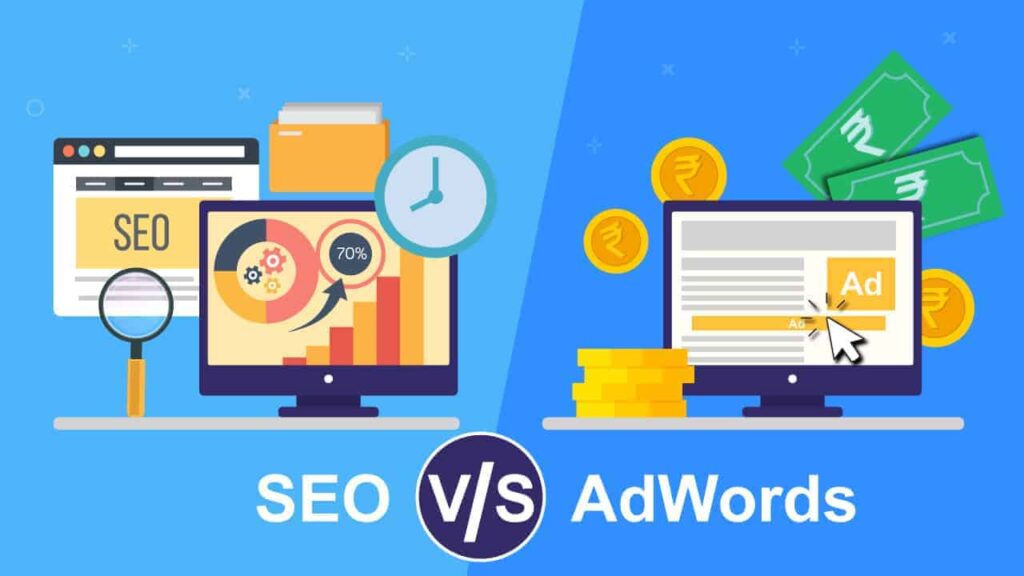In the dynamic digital landscape, businesses often find themselves at a crossroads when deciding how to drive traffic and generate leads online. Two of the most prominent strategies are Search Engine Optimization (SEO) and Google Ads. Each has its distinct advantages and challenges, and choosing the right approach depends on your business goals, budget, and timeline.
Google Ads: The Fast Track to Visibility
Google Ads, part of Google’s pay-per-click (PPC) advertising system, is renowned for its speed and efficiency in delivering results. Here’s why:
- Instant Visibility: When you launch a Google Ads campaign, your ads can appear at the top of search results almost immediately. This is especially beneficial for new businesses that need to make a splash quickly or for those running time-sensitive promotions.
- Targeted Advertising: Google Ads allows for precise targeting. You can reach potential customers based on their location, interests, search habits, and more. This ensures that your ads are seen by people who are most likely to convert.
- Controlled Costs: With Google Ads, you set your budget and only pay when someone clicks on your ad. This pay-per-click model gives you control over your advertising spend and can be scaled according to your financial capacity.
- Measurable ROI: Google Ads provides detailed analytics, enabling you to measure the performance of your campaigns in real-time. You can track clicks, impressions, and conversions, and adjust your strategy accordingly to maximize your return on investment.
However, the quick wins of Google Ads come with a condition. The competition for keywords, especially in highly competitive industries, can drive up the cost per click (CPC), making it an expensive proposition over the long term. Additionally, once you stop paying for ads, your visibility diminishes instantly.
SEO: The Long Game for Sustainable Growth
SEO, on the other hand, is a marathon, not a sprint. It involves optimizing your website to rank higher in organic search results, thus attracting free, ongoing traffic from search engines. Here’s why SEO remains a cornerstone of digital marketing:
- Long-Term Benefits: Unlike Google Ads, the effects of SEO are long-lasting. Once your site starts to rank well for your target keywords, it can continue to attract traffic without the ongoing cost associated with PPC campaigns.
- Credibility and Trust: Organic search results are often perceived as more credible and trustworthy compared to paid ads. High organic rankings can enhance your brand’s reputation and authority in your industry.
- Cost-Effective: While SEO requires an upfront investment in content creation, technical optimization, and link building, it tends to be more cost-effective in the long run. There’s no ongoing payment for clicks or impressions.
- Broad Reach: SEO helps in capturing traffic from a wider range of keywords, including long-tail keywords that are less competitive but highly relevant to specific queries.
Despite these advantages, SEO is not without its challenges. It is a slow process, often taking months to see significant results. This can be a drawback for businesses that need quick leads and sales. Moreover, highly competitive keywords can be difficult to rank for, sometimes making SEO an impractical option for certain industries or niches.
Balancing the Two: A Strategic Approach
For many businesses, the best approach is a balanced one that leverages both SEO and Google Ads. Here’s how you can integrate both strategies:
- Short-term and Long-term Goals: Use Google Ads to drive immediate traffic and leads, especially when launching new products or entering new markets. Simultaneously, invest in SEO to build a sustainable source of organic traffic over time.
- Data-Driven Decisions: Use insights from your Google Ads campaigns to inform your SEO strategy. The keywords that perform well in paid campaigns can guide your organic content and optimization efforts.
- Complementary Strategies: Consider SEO and Google Ads as complementary rather than mutually exclusive. SEO can help you reduce your reliance on paid ads in the long term, while Google Ads can boost your visibility in the short term and during critical periods.
- Adapt and Scale: Monitor the performance of both strategies and be ready to adapt. Scale up your Google Ads spend during peak seasons or when launching new initiatives, and continuously refine your SEO efforts to maintain and improve your organic rankings.
Conclusion
In the debate between SEO and Google Ads, there is no one-size-fits-all answer. Each has its unique strengths and can play a crucial role in a comprehensive digital marketing strategy. By understanding the advantages and limitations of both, and how they can complement each other, businesses can make informed decisions that align with their objectives and budget. Whether you’re looking for quick wins or aiming for sustainable growth, a balanced approach to SEO and Google Ads can provide the best of both worlds.
Need help deciding between SEO and Google Ads? Contact me for expert advice and customized solutions!


